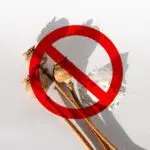Insect Repellent Awareness Day is celebrated on June 3 every year. Everyone has been bitten by an insect before and while many insect bites offer nothing more than discomfort, some lead to illnesses. The most common insect bite that leads to illness is the mosquito bite which can give rise to malaria, one of the deadliest diseases in the world, and which continues to take countless lives. Insect Repellent Awareness Day was created to promote the use of insect repellents to prevent insect bites and the spread of diseases that happen when bites occur. On this day, everyone is encouraged to take measures to prevent insect bites.
History of Insect Repellent Awareness Day
People reacting to insect bites is as old as time. Insects are everywhere and over time, people have tried to develop measures to control them and in turn stop the spread of diseases that they transmit. One of the major diseases of concern on Insect Repellent Awareness Day is Malaria which is transmitted by Mosquitoes. Malaria started as a zoonotic disease found in the primates of Africa and since then has spread to every continent apart from Antarctica. For hundreds of years, the prevention and treatment of malaria have been targeted by advances in science and technology.
Understanding how the malaria parasites operate began in 1880 with Alphonse Laveran’s discovery of the parasites in the blood of malaria patients. A few years down the line in 1897, the sexual stages of the malaria parasite in the blood were discovered by William MacCallum. The next year in 1898, Italian Malariologists, Giovanni Battista Grassi, Giuseppe Bastianelli, Amico Bignami, Camillo Golgi, Angelo Celli, and Ettore Marchiafava concluded that human malaria was transmitted by mosquitoes, and in this case, the anophelines.
More strides were made when Henry Shortt and Cyril Garnham discovered that malaria parasites developed in the liver before entering the bloodstream in 1948. Wojciech Krotoski also demonstrated in 1982 the final stage in the life cycle of the plasmodium parasite and the presence of dormant stages in the liver. All these have led to what we now know as Insect Repellent Day as it was launched by the scientists at the London School of Hygiene & Tropical Medicine in a bid to get people to understand the importance of using insect repellents at home and while traveling.
Insect Repellent Awareness Day timeline
Alphonse Laveran discovers malaria parasites in the blood of malaria patients.
William MacCallum discovers the sexual stages of the malaria parasite in the blood.
Italian Malariologists conclude that human malaria is transmitted by mosquitoes, and in this case, the anophelines.
Henry Shortt and Cyril Garnham discovered that malaria parasites developed in the liver before entering the bloodstream.
Wojciech Krotoski demonstrates the final stage in the life cycle of the plasmodium parasite and the presence of dormant stages in the liver.
Insect Repellent Awareness Day is founded by scientists at the London School of Hygiene & Tropical Medicine.
Insect Repellent Awareness Day FAQs
What was the first insect repellent?
The first insect repellant was citronella oil.
What does DEET stand for?
DEET stands for N, N-diethyl-meta-toluamide and is the active ingredient in many repellent products.
Does mosquito spray expire?
Bug sprays usually have a shelf life of about three years.
How to Observe Insect Repellent Awareness Day
Fumigate your home
Fumigate your home to celebrate the day. It helps ensure that your home is insect-free.
Learn first aid for Insect bites
Learn how to carry out first aid treatment for insect bites. It helps reduce negative reactions when it is treated on time.
Spread awareness
Spread awareness about the day. The more people that know about Insect Repellent Awareness Day, the better it is for the community.
5 Facts About Malaria
It breeds in warm climates
Malaria breeds mostly in warm climates as humidity and rain are abundant.
It exists in 85 countries
Malaria exists in 85 countries worldwide and affects about 3.3 billion people.
1,500 cases of malaria yearly
1,500 cases of Malaria are found in the U.S. every year.
Malaria can be dormant
The malaria parasite can remain dormant and an infected person may not become ill for up to four years.
Sub-saharan Africa records the most deaths
90% of malaria-related deaths occur in sub-Saharan Africa.
Why Insect Repellent Awareness Day is Important
It educates people
The day seeks to educate people on how to prevent diseases caused by insects and it does just that. On this day, people get to learn the best practices for taking care of their environment in relation to insects.
It prevents deaths
Having good knowledge on how to prevent insect bites helps to prevent deaths in the world. As some diseases from insect bites are potentially fatal, the knowledge of preventing them is good to have.
It boosts the economy
The day serves to boost the economy. As fewer people visit the hospitals or pharmacies to treat malaria and other diseases arising from insect bites, less money is spent on the treatment of these diseases.
Insect Repellent Awareness Day dates
| Year | Date | Day |
|---|---|---|
| 2026 | June 3 | Wednesday |
| 2027 | June 3 | Thursday |
| 2028 | June 3 | Saturday |
| 2029 | June 3 | Sunday |
| 2030 | June 3 | Monday |
















